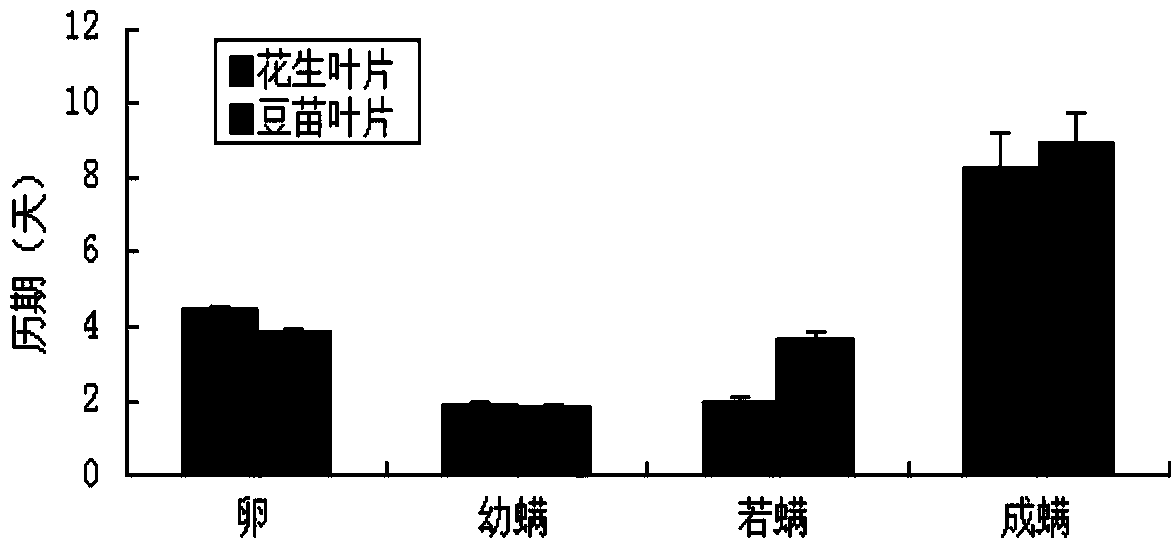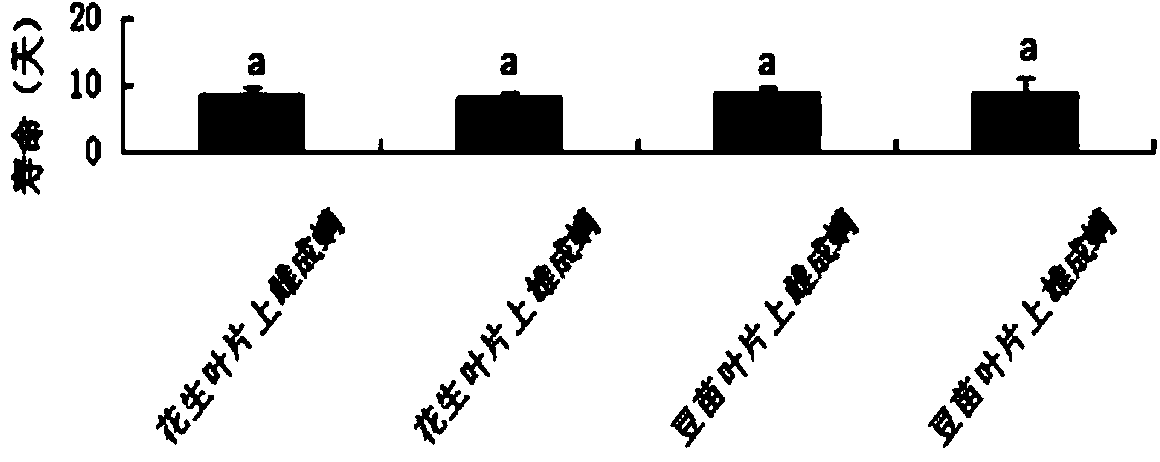Indoor fast spider mite population propagation method
A kind of population and rapid technology, applied in animal husbandry, etc., can solve the problems of small number of leaves, short feeding time, affecting the normal growth and reproduction of spider mite populations, etc., to achieve simple breeding technology, fast growth speed, and guaranteed succession maintenance and multiplication effects
- Summary
- Abstract
- Description
- Claims
- Application Information
AI Technical Summary
Problems solved by technology
Method used
Image
Examples
Embodiment 1
[0015] Example 1 Indoor rapid multiplication of spider mite populations
[0016] 1. Test spider mite
[0017] The tested spider mite was Tetranychus urticae, which was subcultured indoors in an artificial climate chamber by the sponge-water isolation table method, and the host leaves were insect-free bean seedlings (the variety is "Bifeng"). The feeding condition is 26±1°C, the relative humidity is about 80%, and the photoperiod is 16h:8h (L:D).
[0018] 2. Spontaneous process of peanut seedlings
[0019] Indoor cultivation of insect-free peanut seedlings, the specific process is: select new peanut species with full grains, uniform size, and no damage, first wash the seeds with clean water, and remove the seeds, seed coats and impurities floating on the water surface. Soak overnight, the next day, 2 of the soaked seeds are placed in a group of nutrient pots with water-drenched vermiculite soil (when there are many peanut seedlings, the soaked seeds can also be evenly sprinkl...
Embodiment 2
[0021] Embodiment 2 Peanut and kidney bean are used as the contrast of host culture Tetranychus urticae
[0022] 1. Lifespan and egg production of Tetranychus urticae on the leaves of beans and peanuts
[0023] Peanut leaves and bean leaves are respectively punched into leaf butterflies of the same size (2 cm in diameter) with a puncher. The leaf butterfly was placed backside up on top of damp filter paper in a Petri dish (3.5 cm in diameter). Each leaf butterfly was connected with 10 newly hatched female adult mites within 24 hours, covered with Parafilm film, and repeated 4 times. After 24 hours, the female adult mites were removed, and 10 eggs were left on each leaf butterfly. Observe the growth and development of spider mites every day, record the development time from eggs to adults, and pick out each adult mite separately on a single leaf butterfly after it develops into adults. The lifespan of male and female adults and the amount of eggs laid by female adults were r...
PUM
 Login to View More
Login to View More Abstract
Description
Claims
Application Information
 Login to View More
Login to View More - R&D
- Intellectual Property
- Life Sciences
- Materials
- Tech Scout
- Unparalleled Data Quality
- Higher Quality Content
- 60% Fewer Hallucinations
Browse by: Latest US Patents, China's latest patents, Technical Efficacy Thesaurus, Application Domain, Technology Topic, Popular Technical Reports.
© 2025 PatSnap. All rights reserved.Legal|Privacy policy|Modern Slavery Act Transparency Statement|Sitemap|About US| Contact US: help@patsnap.com



